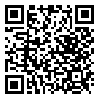BibTeX | RIS | EndNote | Medlars | ProCite | Reference Manager | RefWorks
Send citation to:
URL: http://jdisabilstud.org/article-1-2564-en.html
2- Director of Propaganda and Cultural Communication, Soore University, Tehran, Iran
3- Communication Sciences and Journalism Department, Islamic Azad University of Tehran Central Branch, Tehran, Iran
Abstract
Background & Objectives: People with disabilities always face challenges in social fields, as well as in personal fields and social characterization. Despite the presence of millions of people with disabilities in the country, the official media, except for a handful of cases, have not paid sufficient attention to this section of society. In other words, regarding representing people with disabilities in the selected media, they have not followed the law or written instructions. Despite the activities carried out to cover the news and activities of people with disabilities in the media, the lack of media space is still clearly visible both in radio and television, in the performing arts space, theater and cinema, as well as in news agencies. Nowadays, Iranian media have poor attention to this important and non–written mission. So, this research was conducted to know the representation of people with disabilities in Iranian media.
Methods: The research method of this article is qualitative, based on Grounded theory and the main research tool is the deep semi–structured interview. Iranian media elites were targeted for interviews. In this article, media elites are defined as persons with at least 10 years of experience or who have a master's degree and higher university studies with lower experiences. Four experts were selected for the interview. These experts were all men. The validity of actual research is based on triangulation and two theories as labeling theory contributed by Goffman in 1963 and usage and gratification theory contributed by Katz and Blumer in 1974. Theories were selected for catching the validity of actual research.
Results: The results of the actual research were based on the semi–structured interview and are presented as opening coding, axial coding, and selective coding table. The findings emerged in the form of 13 subcategories and 6 main categories informing society to how to behave about persons with disability circumstances, informing and pedagogy of persons with disability about their capability, defining exact policies for media toward disabled people, categorizing the needs of persons with disability, using disabled people in the administration of media, publishing news of disable people in journals and news agencies, designing cinemas and theatres for using of persons with disability and using of persons with disability in artistic productions as theatre, cinema, and TV series were the main topics coded in three steps coding in actual research.
Conclusion: According to the results, the establishment of TV and radio stations, assigning of a section of news agencies and journals agenda to the persons with disability and applying this sort of persons through theatre and movies can improve the social situation of these people.
| Rights and permissions | |
 |
This work is licensed under a Creative Commons Attribution-NonCommercial 4.0 International License. |



